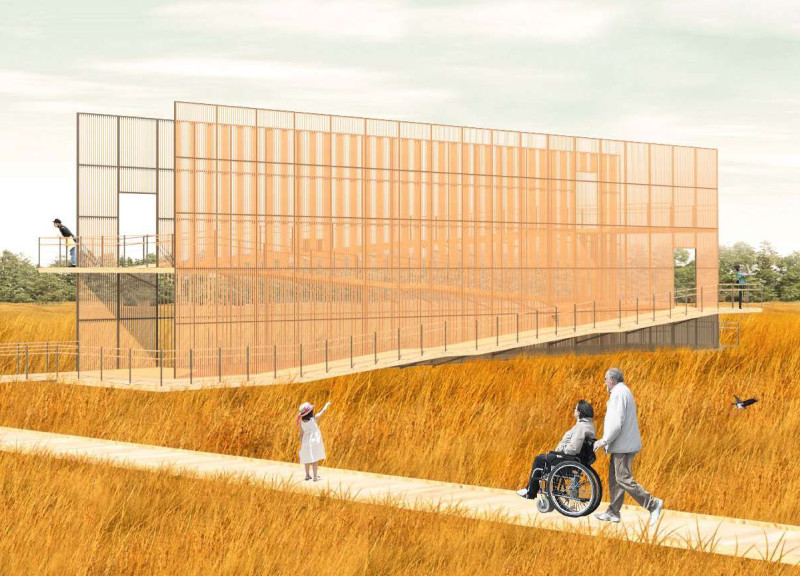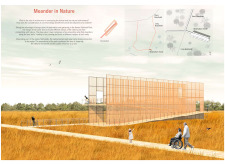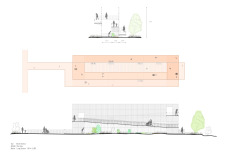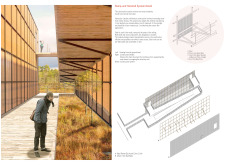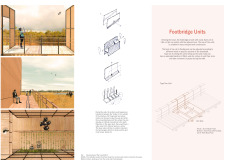5 key facts about this project
### Overview
The design concept for Kemeri National Park in Latvia aims to integrate human activity with the natural environment, creating spaces for observation, social interaction, and reflection. The initiative emphasizes connectivity between the built form and its surroundings, particularly through the introduction of an observation tower that serves as both a physical and metaphorical elevation, enhancing visitors' engagement with the landscape.
### Spatial Organization and Circulation
The layout of the project utilizes the park's natural topography to create pathways that emulate the flow of water, reinforcing historical connections to the area's ecological character. A network of walkways, including both short and long boardwalks, provides accessible routes designed for all visitors, including those with mobility impairments. Gradual ramps facilitate elevation changes in a manner that invites physical engagement while echoing the meandering theme of the design.
### Material Use and Aesthetic Considerations
Key materials selected for the project align with its environmental ethos and contextual needs. The structure employs steel for strength and durability, allowing for a minimalist aesthetic. Locally-sourced oak, harvested from nearby forests, enhances both the design's ecological sensitivity and regional character. Semi-translucent wooden slats form the façade, permitting natural light while maintaining visual connections to the landscape. Concrete elements provide foundational stability and support, creating a durable and sustainable environment for visitors.
The design prioritizes user experience by offering various observation points, with dual platforms that provide differing perspectives of the flora, fauna, and expansive views of the national park. The integration of adjustable features, such as handrails along the ramps, further encourages interaction and contemplation within the setting.


